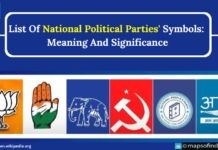The era of the Indian cinemas dates back to 1913, when Dadasaheb Phalke made the first silent feature film of the Indian Cinemas, Raja Harishchandra. Since then, the Indian movie industry has progressed by leaps and bounds, completing its centenary in 2013. Commemorating the long and arduous journey of the Indian Cinemas, the Ministry of Information and Broadcasting came up with the outlines of a plan for implementing a museum for the Indian cinemas, back in 2007. However, the blueprint with the minutes for such a noble project was not ready until 2010. The Planning Commission ratified the final project in 2010. The implementation of the project was delayed by a further two years due to deterring factors such as the Bombay High Court’s clearance. Finally in May, 2012, the court gave the go-ahead for the project. Gulshan Mahal, a completely refurbished heritage building located in the premises of the Films Division, has been demarcated as the venue for the National Museum of Indian Cinema, on the Peddar Road, Mumbai. As of November 2, 2013, construction works for the proposed Museum continues at a frenzied pace, to meet the scheduled inauguration of the said Museum in mid-November.
The National Museum of Indian Cinema
The National Council of Science Museums (NCSM), Kolkata, under the Ministry of Culture, has been vested with the responsibility of constructing and supervising the National Museum of Indian Cinema. It is to be mentioned here that the NCSM is accredited with the conceptualization and development of 55 different kinds of museums all over the country. The National Museum of Indian Cinema, the unique concept of dedicating a memorial to the history of Indian Cinemas in the entire country, is coming up in the Victorian heritage site of the Gulshan Mahal, a part of the premises of the Films Division, on the Dr. G. Deshmukh Marg, Mumbai. As per the statement of V. S. Kundu, Director General of the Films Division, “It will be the first ever museum of Indian cinema, and will serve as a monument for Indian cinema.” With a budget of nearly Rs 120 crore, the construction of the museum involves two separate stages. The first phase will cover an area of 6,000 square feet in Gulshan Mahal.
The NCSM Director, Mr Rautela, seems to be quite excited about the prospect of the National Museum of Indian Cinema, and has described that the said Museum will depict the technological angles involved in the making of a cinema, inclusive of production and final screening. He further added that the museum will also reflect upon the changing social issues of the past hundred years. A consultative body, chaired by Shyam Benegal, the much-acclaimed movie maker, is assisting the NCSM in the conceptualization of the said Museum. The category designated ‘Cinema before Cinema’ will attempt to capture the nascence of Indian cinemas, featuring antique cinematic technologies like the praxinoscope, the mutoscope, models of antique movie cameras and film shooting equipment, lost in the annals of time.
The Museum will showcase the long journey of the Indian cinemas, beginning with the silent movies, to the modern day’s studio filmmaking. The Museum will also re-conceive the era of the Indian cinemas, when stars and megastars commanded the film industry. The Museum further plans for the regeneration of frames from benchmark films like Raja Harishchandra by Dadashaheb Phalke, using statues complete with models of antiquated film-making equipment. A balcony with a substantial stretch of a corridor is also being designed, which will essentially be a gallery of posters, booklets and other mementos from the past eras of Hindi as well as regional movies. A walk along this corridor will be a virtual journey across the hundred-year-old chronicles of Indian cinema.
As per the statements of Amit Gangar, a renowned film historian and the appointed curator for the National Museum of Indian Cinema, “The museum will have a holistic view of Indian cinema, where the multiplicity of the art will be displayed, as I visualize it”. He added that, “The history of cinema is also the history of humanity. It is both fascinating and challenging to put it together in the form of a museum”. Indicating the diverse nature of the films proposed to be showcased in the museum, he commented, “India, in a way, is a continent, as we have so many types of cinema. We have regional cinema, mainstream and art, whatever name you want to give it. There are so many voices and so many expressions”.
There are plans for constructing a capacious studio immediately adjacent to the Museum for hosting conventions and workshops on film study, including film shows and other related activities. These plans are included in the first phase of the construction of the Movie Museum. As confirmed by Mr. Kundu, ratification for the second phase of construction of the Museum has already been secured. The second phase will involve elaborate constructions, as described by Mr. Kundu, “A ten-storey building is planned, which will house a gallery, a food court, a film preservation center and two theaters. A parking zone with 138 underground and on-ground slots is under construction.” The reputed film historian, Amit Gangar, has been appointed as the curator of this Museum who commented, “After joining the project, I travelled across India, collecting memorabilia associated with Indian cinema”.
The two years’ delay in the implementation of the Museum Project
Though the NCSM had been bestowed with the responsibility of creating the Museum in 2010, residents of four housing complexes in the Peddar Road area were strongly opposed to the construction of the Museum in the Films Division premises, and had submitted a plea regarding this in the Bombay High Court. The appellants were chasing the issue that such a museum will only increase traffic and noise pollution. The court proceedings took a long two years, but finally the High Court gave a green light to the project, brushing off the said issues on May 2012.
The delay in the inauguration of the The National Museum of Indian Cinema
The National Museum of Indian Cinema was supposed to be inaugurated on May 13, 2013, in congruence with the screening date of Dadasaheb Phalke’s Raja Harishchandra in 1913. But as the museum is located in the core of a residential area, limited working hours of 9 a.m. to 6 p.m. had slowed down the construction process. Besides, pending paperwork and environmental issues had postponed the proposed inauguration to mid–November.
Reaction of the Bollywood Film Industry to the proposed museum
The Bollywood Film Industry has generally accepted the project, probably with a pinch of salt, as evident from the comments of the popular commercial film director and producer Mahesh Bhatt, “The authorities should ensure that the museum focuses on all the representatives of the Indian cinema. For too long, popular cinema has been looked down upon with disdain by many”.
Conclusion
The National Museum of Indian Cinema will be opened to the public in stages. While the first phase of the said Museum is expected to be inaugurated by mid-November, the constructions for the second phase, which will be the bigger arm of the Gulshan Mahal Museum, will commence after the necessary paperwork is in order, scheduled to be completed in 15 months’ time.
The proposal for the National Museum of Indian Cinema was first announced by the ex – Minister of Information and Broadcasting, Ambika Soni, in 2011. Indian cinemas have gone through a revolution of changes and from the current perspective, Indian cinemas are quite popular all over the world. The National Museum of Indian Cinema comes as an encouraging step towards acknowledging the art of Indian cinemas. Preservation of the old cinemas had always been a disturbing issue plaguing the movie industry. Many films were lost due to accidents and lack of proper preservation. One such hallmark film is the original version of Devdas, which was completely destroyed when the New Theatres was engulfed in fire. But the National Museum of Indian Cinema will prove to be a milestone, in the conservation of the hundred years old film heritage of our country, and a permanent memorial of the history of Indian cinema.




